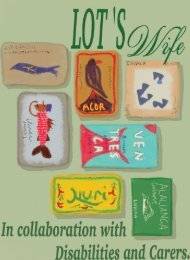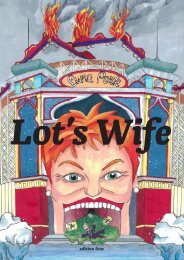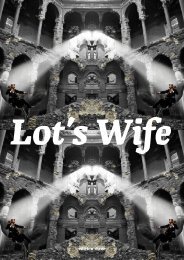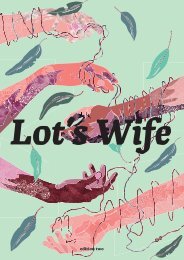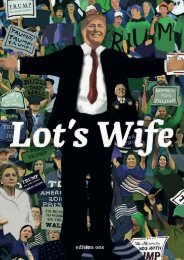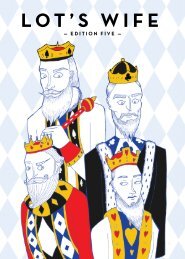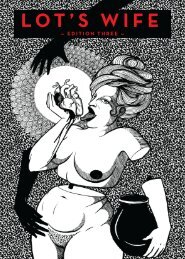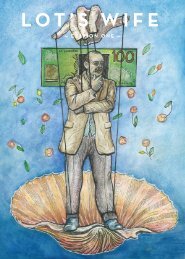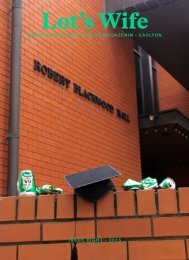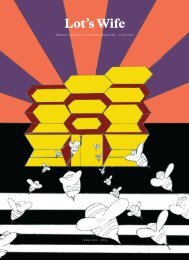Lot's Wife Edition 8 2013
You also want an ePaper? Increase the reach of your titles
YUMPU automatically turns print PDFs into web optimized ePapers that Google loves.
NATIONAL AFFAIRS<br />
CONSEQUENCES IN<br />
ZONE 2<br />
Linking east and west, dividing inner and outer Melbourne<br />
Anthony Taylor<br />
The proposal for a freeway from Clifton Hill to Parkville (and then to<br />
the Western Ring Road) may not seem immediately relevant to transport<br />
in Clayton. However, the size of the project means it has significance<br />
for all of Melbourne, even all of Australia. This<br />
is because approximately $8 billion would be tied<br />
to the project. The sheer amount of Victorian<br />
Government funding needed will preclude the<br />
implementation of other policies and infrastructure<br />
projects across the state.<br />
The commentary and developments regarding<br />
the East West Link proposal affirm, amongst many<br />
other things, a key lesson about transport policy in<br />
Victoria. The lesson is that there is an inner suburbouter<br />
suburb divide in Melbourne, which extends<br />
to community response to transport policy; and<br />
complementing this, there is a public transportprivate<br />
(ie. motor) transport divide. There is certainly a complex and<br />
fascinating relationship between these two binaries which is played out in<br />
the media and is also evidenced by actors: politicians, transport bureaucrats,<br />
the road lobby, inner-city activists and so on.<br />
“Where inner Melbourne<br />
expanded with the provision<br />
of good public transport, and<br />
then cars augmented this<br />
later, in Zone 2 it has only<br />
ever been cars. In Zone 2,<br />
then, a new freeway further<br />
entrenches how necessary a<br />
car is to get around.”<br />
It is difficult to intelligently explain why there is such a divide in<br />
community response (or lack thereof) to transport projects. The answer<br />
which is often parroted would be that it is simply “hipsters” or “inner city<br />
lefties” who protest road projects; meanwhile, the<br />
“battlers” in the outer suburbs don’t have time for<br />
such bullshit. They have long hours and bills to pay,<br />
and cars are the only practical way of getting around.<br />
Sadly, the next move of the Hun-style argument is<br />
to convince people in outer suburbs that, since it is<br />
only the privileged city dweller who protests roads,<br />
the best they can and should expect is a new road.<br />
However, the overwhelming investment in private<br />
motor transport, and concomitant urban sprawl over<br />
the past 50 years can also do some work to explain<br />
the differing responses to road projects in inner and<br />
outer Melbourne.<br />
Every time a new freeway is built in this city, it sharpens the divide<br />
between the way transport works in Zone 1 and Zone 2. The impact of a<br />
new freeway, regardless of where it is built (leaving aside local impacts), is<br />
not so dramatic for those living in Zone 1. There remains a choice between<br />
10 LOT’S WIFE EDITION 8 • <strong>2013</strong>





